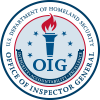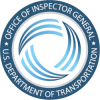
12,594
Open Recommendations
Open Recommendations
Age of Recommendations
3K Open Less Than 1 Year
6K Open Between 1-5 Years
2K Open More Than 5 Years
Date
Federal OIG
Report Title
Type: Type

Department of the Interior OIG
The Three Affiliated Tribes Did Not Account for CARES Act Funds Appropriately
Type:
Audit

Department of Health & Human Services OIG
Medicare Dialysis Services Provider Compliance Audit: Dialysis Clinic, Inc.
Type:
Audit

Department of Defense OIG
Audit of the DoD Component Insider Threat Reporting to the DoD Insider Threat Management and Analysis Center (Full Report is CUI)
Type:
Audit

Department of Homeland Security OIG
More than $2.6 Million in Potentially Fraudulent LWA Payments Were Linked to DHS Employees’ Identities
Type:
Audit

Department of Transportation OIG
Quality Control Review on the Independent Auditor’s Report on the Assessment of DOT’s Information Security System Program and Practices
Type:
Audit

Department of Justice OIG
Management Advisory Memorandum: Notification of Concerns Resulting from Multiple Office of the Inspector General Reviews Related to the Federal Bureau of Prisons Strategy for its Medical Services Contracts
Type:
Other

Small Business Administration OIG
COVID-19 and Disaster Assistance Information Systems Security Controls
Type:
Audit

